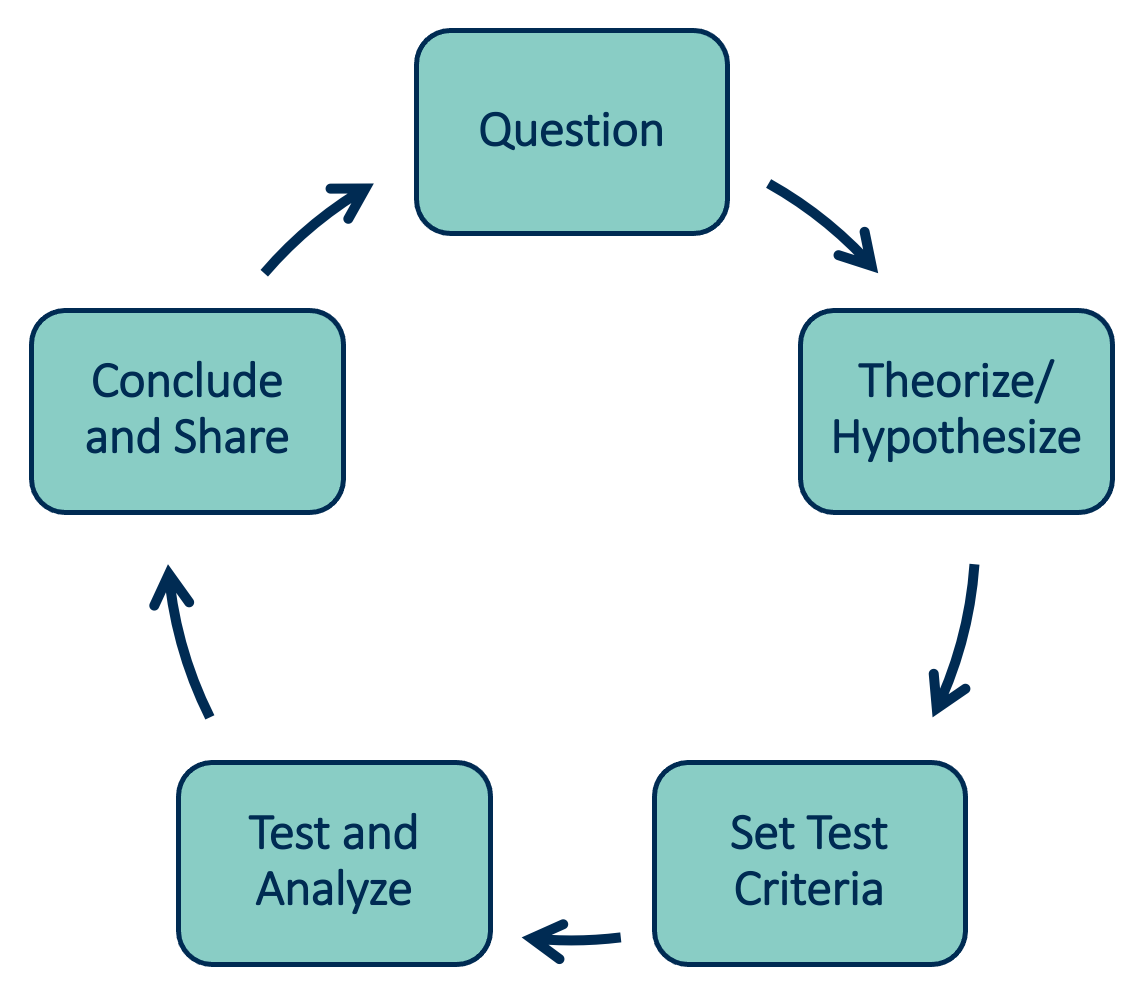8.2 – Steps of the Scientific Method
The previous section emphasizes the features of the scientific method that make it such an effective tool for researchers. These features are optimized by strict procedures specified in science. In fact, the scientific method is a “method” and can be thought of as specifying a series of steps to improve the accuracy of our attempts to discover facts and get closer to the “truth.” For our purposes, these are the important steps of the scientific method:
- Question – Ask a question about the relationship between at least two variables
- Theorize/Hypothesize – Make a prediction about the relationship
- Set Test Criteria – Set the criteria for how you will test the hypothesis.
- Test and Analyze – Run the test and analyze the data.
- Conclude and Share – Make a data-based conclusion and share the results.
These steps ultimately form a circular process because the conclusions can be used to develop or alter the research questions and/or the theories and hypotheses:

Thus, the scientific method is best understood as an iterative process where the steps are continually repeated with the goal of ideally getting closer and closer to the “truth” with each iteration, or repetition, of the cycle. This is important to remember because, in comparison to today’s fast-paced and instant-gratification world, the scientific method moves at a sloth-like speed in comparison and it is easy to get frustrated when science doesn’t provide answers quickly. However, it is this slow yet deliberate process that makes it so effective.
We are going to translate this scientific process into a step-wise procedure that we will follow for the remaining chapters. In this procedure, we will officially be using inferential statistics to attempt to use the results from an empirical research study to try to get closer to the answer to our research question.
This does not mean that the process we are about to learn is meaningless. Every research study provides evidence and information that we didn’t have before, and this improves our ability to make an educated guess about our research question. It’s just important that we remind ourselves to maintain our skepticism or doubt because we are wired to often be overconfident about our beliefs or conclusions.
An empirical method, or strategy, to discover facts about the world emphasizing careful observation, making and testing hypotheses, and sharing results within a scientific community. It employs a strict skepticism to minimize errors due to common cognitive biases.
Statistical processes that help researchers explore a research question by using probability to infer generalizations about the population from the data and results of a sample.


Feedback/Errata